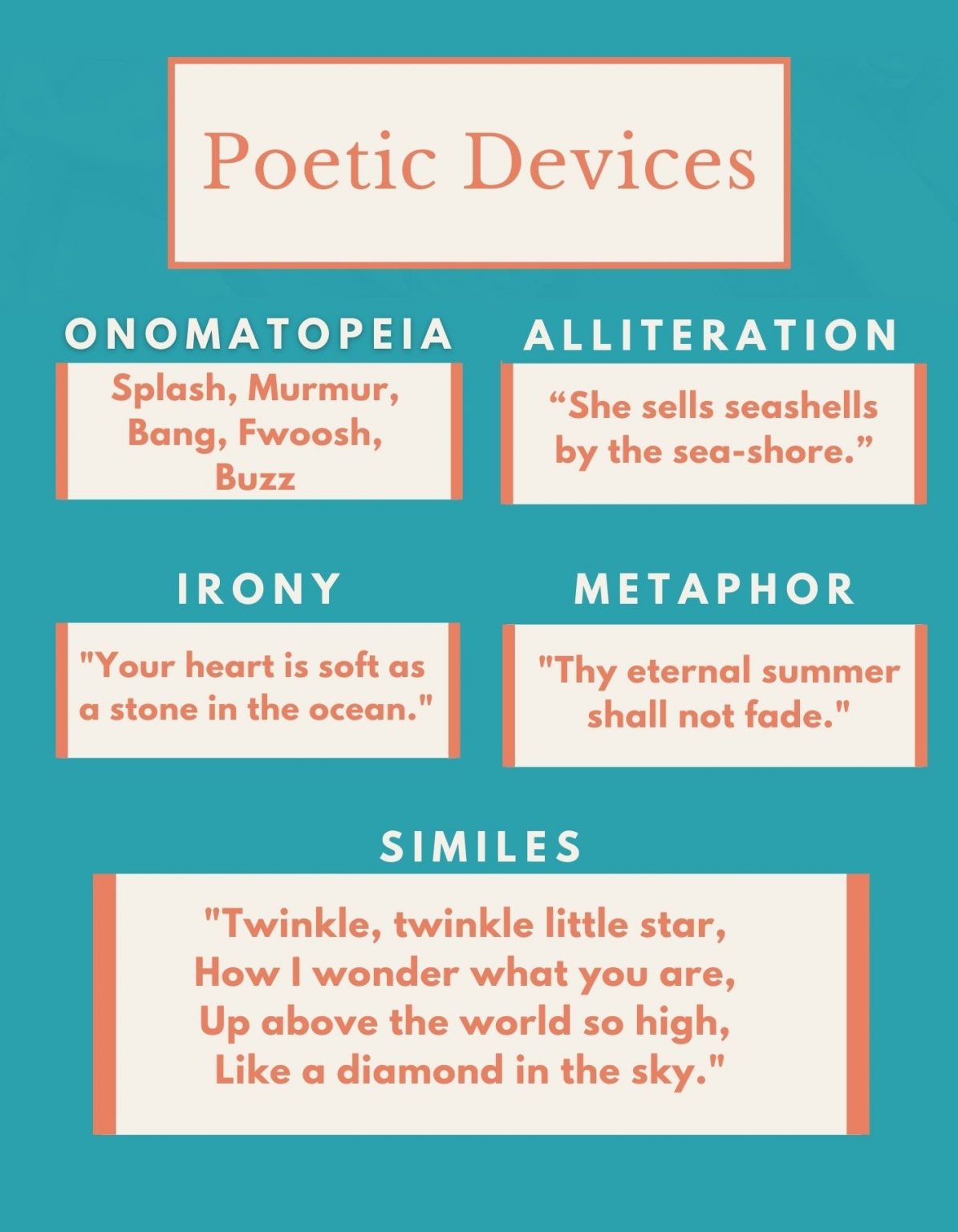
PM [1]
Rank : Helper
Status : Super Owner
#1

## Complete Details Poetic Devices:
Here's a breakdown of common poetic devices, including examples:
Sound Devices:
Alliteration:
Repetition of consonant sounds at the beginning of words.Example:
"Peter Piper picked a peck of pickled peppers."Assonance:
Repetition of vowel sounds within words.Example:
"The rain in Spain falls mainly on the plain."Consonance:
Repetition of consonant sounds within words.Example:
"Peter Piper picked a peck of pickled peppers."Onomatopoeia:
Words that imitate the sounds they represent.Example:
"The buzzing bee flew by."Rhyme:
Repetition of similar sounds, typically at the end of lines.Example:
"Humpty Dumpty sat on a wall, / Humpty Dumpty had a great fall."Internal rhyme:
Rhymes within a line.Example:
"Once upon a midnight dreary, while I pondered, weak and weary."End rhyme:
Rhymes at the end of lines.Example:
"The cat sat on the mat."Slant rhyme:
Near rhymes, where the sounds are similar but not identical.Example:
"The cat sat on the mat, / The cat sat in the hat."Rhythm:
The beat and flow of words in a poem.Example:
"The Raven" by Edgar Allan Poe features a strong, rhythmic pattern.Figurative Language:
Metaphor:
A comparison that states one thing *is* another, without using "like" or "as."Example:
"He is a lion in battle."Simile:
A comparison that uses "like" or "as."Example:
"He is as strong as a lion."Personification:
Giving human qualities to inanimate objects or animals.Example:
"The wind whispered secrets to the trees."Hyperbole:
An exaggeration used for emphasis.Example:
"I'm so hungry I could eat a horse."Understatement:
A statement that makes something seem less important than it is.Example:
"I'm a little bit tired." (when the speaker is extremely exhausted)Oxymoron:
Two contradictory terms used together.Example:
"Living dead" or "deafening silence"Paradox:
A statement that seems contradictory yet may be true.Example:
"The more you know, the more you realize you don't know."Symbolism:
Using an object or image to represent something else.Example:
A dove represents peace.Allegory:
A story with a hidden meaning, often moral or political.Example:
"Animal Farm" by George Orwell allegorically depicts the Russian Revolution.Structure and Form:
Stanza:
A group of lines in a poem, often separated by a space.Example:
A Shakespearean sonnet has three quatrains and a couplet.Free verse:
Poetry that does not follow a set rhyme or meter.Example:
"Song of Myself" by Walt WhitmanMeter:
The rhythmic pattern of stressed and unstressed syllables in a line of poetry.Example:
Iambic pentameter has five pairs of unstressed/stressed syllables per line.Verse:
A single line of poetry.Repetition:
Repeating words, phrases, or lines for emphasis or effect.Example:
"The woods are lovely, dark and deep, / But I have promises to keep, / And miles to go before I sleep, / And miles to go before I sleep."Enjambment:
A line of poetry that continues onto the next without punctuation.Example:
"I wandered lonely as a cloud / That floats on high o'er vales and hills..."Caesura:
A pause in the middle of a line of poetry, often marked by punctuation.Example:
"The woods are lovely, dark and deep, / But I have promises to keep..."Couplet:
Two consecutive lines of poetry that rhyme.Example:
"The cat sat on the mat, / The cat sat in the hat."Quatrain:
A four-line stanza.Other Devices:
Imagery:
Descriptive language that appeals to the five senses.Example:
"The sun was a ball of fire in the sky."Theme:
The central idea or message of a poem.Example:
The theme of "The Raven" is loss and grief.Tone:
The overall feeling or attitude of a poem.Example:
"The Raven" has a dark and melancholic tone.Tips for Identifying Poetic Devices:
* Pay attention to the sounds of the words.
* Look for patterns in the language.
* Consider the overall meaning of the poem.
This list provides a comprehensive overview of poetic devices. By understanding and recognizing them, you can deepen your appreciation for poetry and gain a better understanding of its nuances and power.